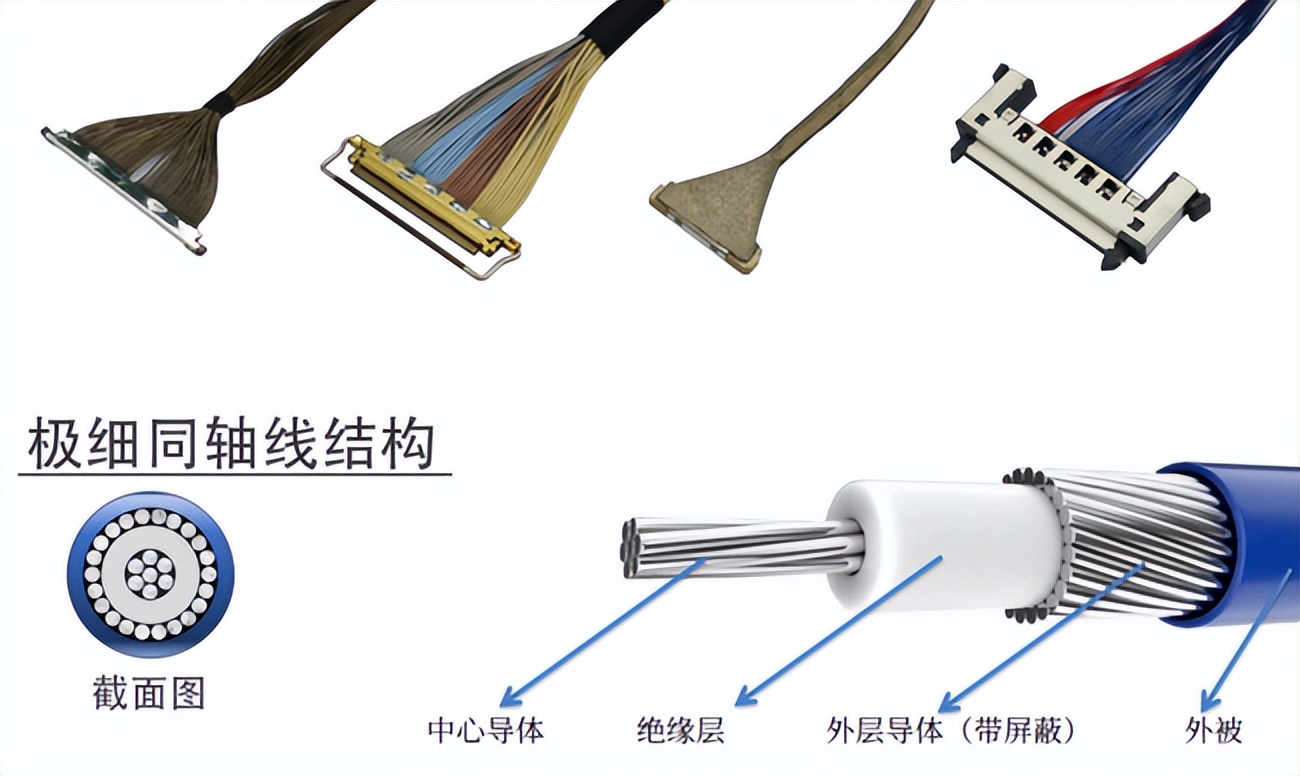Categorization:Harness Component
In the field of high-speed data transmission, ultra-thin coaxial cables (Micro Coaxial Cable) are gradually becoming the first choice for engineers. Their precise structure and excellent electrical characteristics make them particularly outstanding in high-speed and low-interference signal transmission, especially in differential signal transmission applications, demonstrating unparalleled stability and reliability.
What is differential signal transmission?
Differential signal transmission is a method that transmits signals with equal amplitude and opposite phase through two wires separately.
Compared with traditional single-ended signals, differential signals have stronger anti-interference capabilities, which can effectively counteract external electromagnetic noise, thereby ensuring the integrity and stability of data transmission. This is also the reason why high-speed interfaces such as MIPI, USB, and HDMI commonly adopt differential transmission structures.
The structural advantages of ultra-fine coaxial beam束
The extremely thin coaxial cable is usually composed of a central conductor, insulating layer, woven shielding layer, and outer sheath. Its outer diameter can be as thin as below 0.2mm, with extremely high flexibility and freedom in wiring, making it very suitable for equipment structures with limited space.
In differential signal transmission, the advantages of this structure are mainly reflected in the following aspects:
2.1 Reduce crosstalk interference
Multilayer shielding layer design can effectively isolate external electromagnetic interference (EMI) and prevent signal crosstalk between channels.
2.2 Maintain impedance consistency
Coaxial structures help to achieve strict impedance control, ensuring the integrity of differential signals during high-speed transmission.
2.3 Improve Signal-to-Noise Ratio
Excellent structural design significantly reduces signal loss and noise, ensuring purer and more stable signal output.
Section 3: Analysis of Application Scenarios
3.1 Smartphones and tablet devices
In high-speed image signal transmission through interfaces such as MIPI DSI and CSI, ultra-fine coaxial cables have become the mainstream solution, helping to achieve high-resolution and low-latency display.
3.2 Automotive Electronics System
The vehicle-mounted camera and radar sensors have strict requirements for bandwidth and weight, and extremely thin coaxial cables not only meet high-speed transmission but also兼顾lightweighting and flexible wiring requirements.
3.3 Industrial and Medical Equipment
In space-limited precision instruments, Micro Coax can provide a highly reliable signal connection, ensuring stable transmission of high-speed data in complex environments.
In general, the greatest value of ultra-fine coaxial cable束 in differential signal transmission lies in its ability to achieve high-speed, low interference, and high reliability in extremely limited space.
With the continuous upgrading of consumer electronics, intelligent vehicles, and industrial manufacturing, Micro Coax will undoubtedly play a key role in more high-performance devices.
I amSuzhou Hui Cheng Yuan ElectronicFocusing on the design and customization of high-speed signal cable harnesses and ultra-fine coaxial cable harnesses, committed to providing customers with high-stability, high-speed interconnect system solutions. If you have related needs or want to learn more, please contact:Manager Zhang 18913228573 (same as WeChat)。